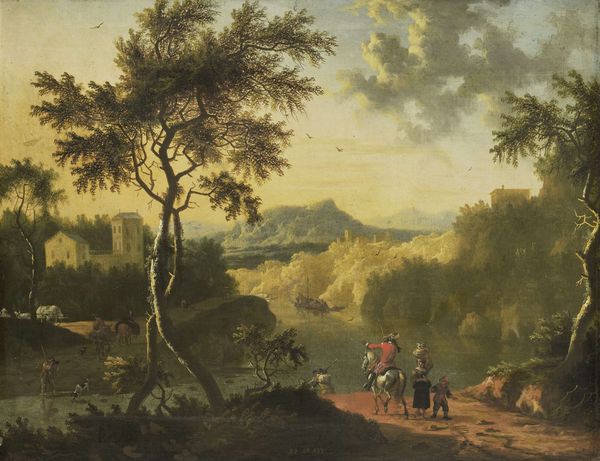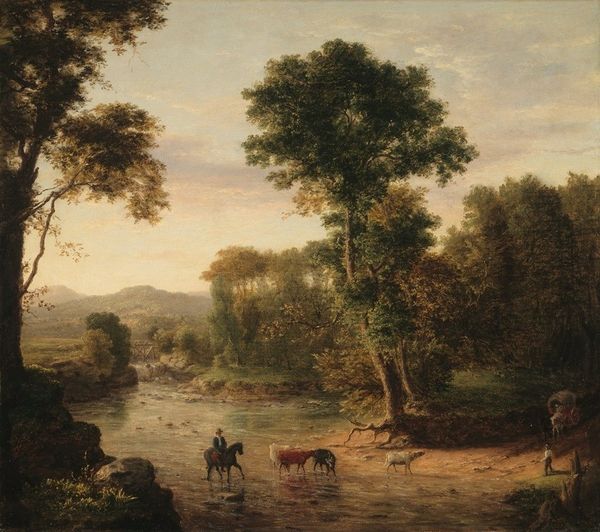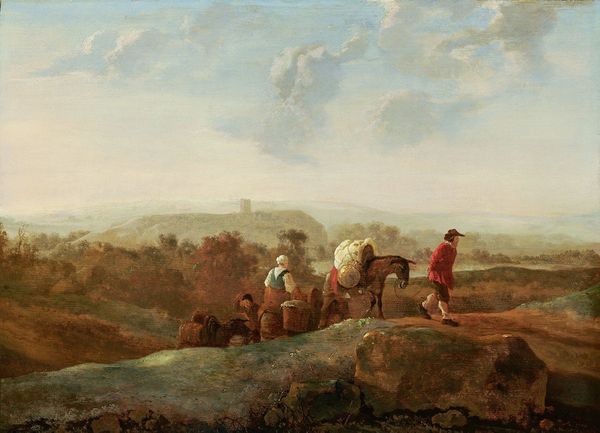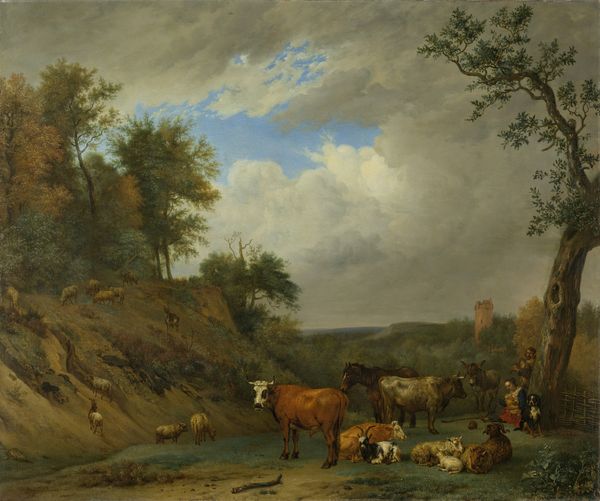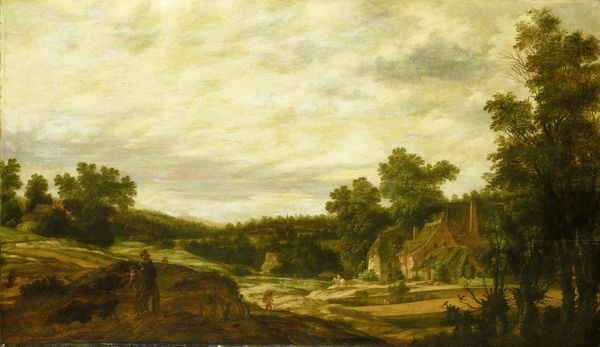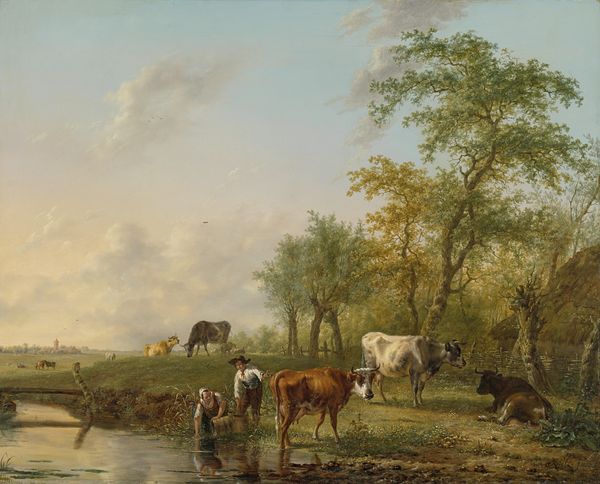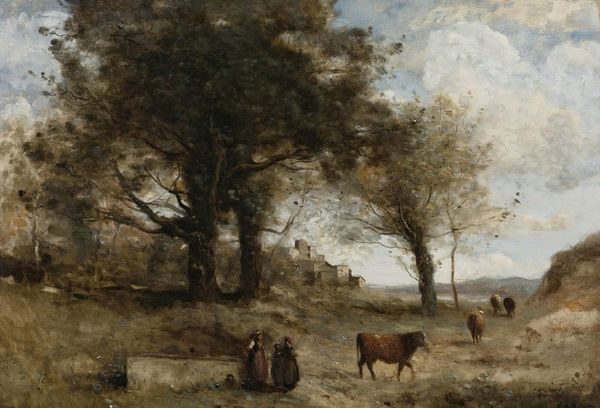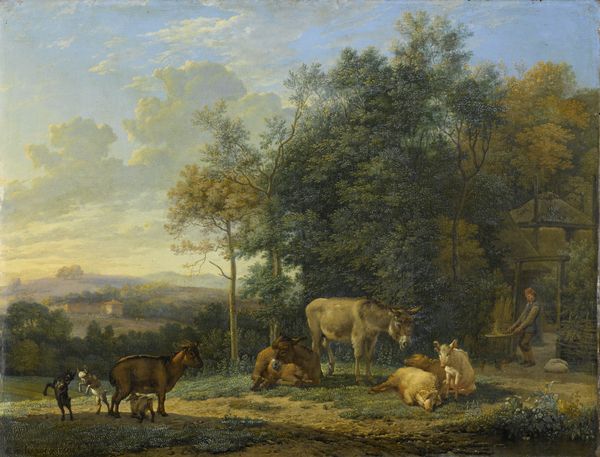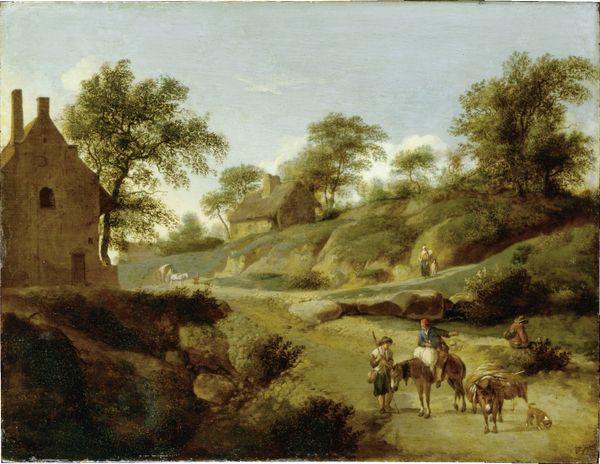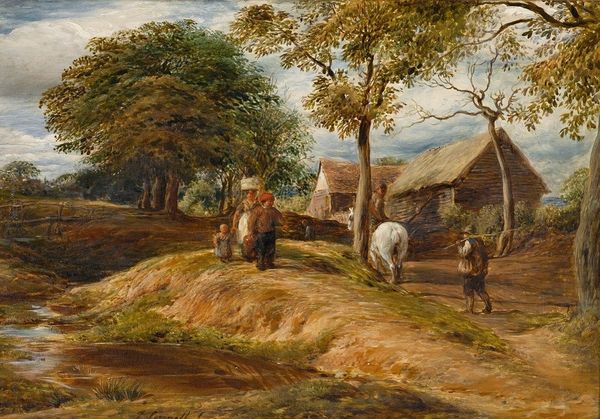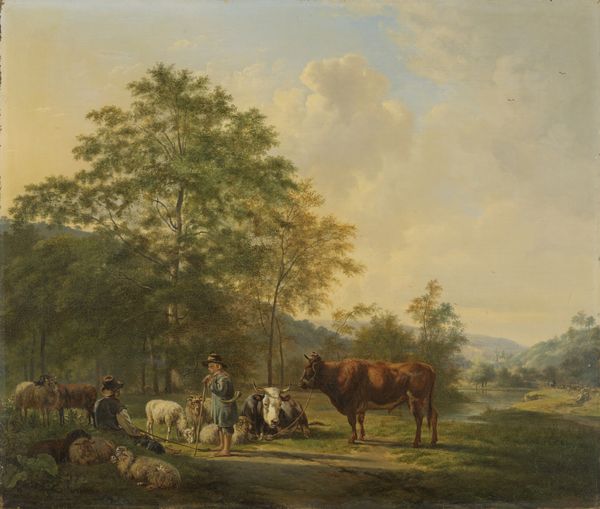
Copyright: Public Domain: Artvee
Curator: So, here we have Millet’s “Hameau Cousin à Gréville,” painted in 1873, rendered in luscious oil paints. There’s a certain serenity to it, don't you think? Editor: Absolutely. It's like stepping back in time. I'm drawn to the contrast between the shadowed foreground and the sunlit buildings nestled in the distance. It creates such a dreamy atmosphere. What do you find most striking about it? Curator: Ah, yes, that sun dappled dance of light and shadow…for me, it’s the palpable sense of connection to the land. It almost whispers of ancient rhythms. Millet had this way of ennobling the everyday, elevating the mundane chores of rural life to something sacred. The quiet dignity he imbues in these figures, these peasants…it really invites reflection. What feelings does the color palette conjure for you? Editor: That’s beautiful. The color palette…it’s muted, earthy tones mostly. Browns, greens, grays... almost monochromatic. Peaceful, perhaps? Though there’s something melancholic about it, too. I imagine it would have been tough. Curator: Precisely. Life was inextricably intertwined with the soil itself. This scene reflects that reality with reverence. The painting captures not just the look, but the feel of the countryside. A visual poem about our fundamental link to nature, perhaps? A reflection of his inner life. What is your lasting impression of this artwork? Editor: I’d say a deep respect for the simplicity of life. And it makes you think about where our food comes from and our disconnect from the natural world today. Curator: I agree! It prompts reflection on our place in the grand scheme of things, urging us to reconsider what truly sustains us. A very fruitful contemplation I dare say!
Comments
No comments
Be the first to comment and join the conversation on the ultimate creative platform.

